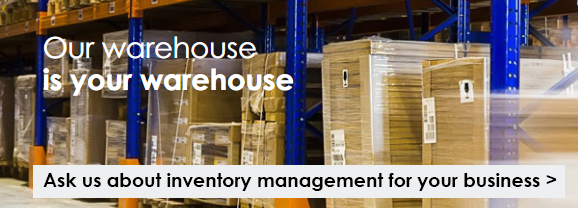How to run a lean distribution network
A lean distribution network helps you to be more efficient, increase capacity and reduce costs.
Here are 5 ways to deliver improvements in your distribution operation, giving you a competitive edge in the current economic climate. They will also increase capacity to manage spikes in demand at peak times.
Improve your inventory organisation
Make the most of the space you have and ensure that inventory is well organised and easy to navigate. If floor space is at a premium, make sure you make use of floor to ceiling height. Adjust racking or pick face height to accommodate your stock range. By adding a stackable pick pin or container to a single shelf, you can double your shelf space in minutes.
Place fast moving stock in prominent, easy access pick locations, this will reduce pick times. Stock which is called off less frequently can be placed in a further away (or higher) location. The introduction of pick trolleys will allow pickers to complete multiple small item orders more quickly.
Organising stock locations does not require an expensive infrastructural change or operational downtime. It can be completed in a matter of hours with a range of relatively inexpensive lightweight, flexible pick systems. Easy to assemble and strong enough to hold up to 500kg, they can be erected quickly. Interchangeable shelf dividers allow you to maximise storage to match your product range.

Engage frequent stock checks and forecasting
Regular stock checks ensure you are getting the optimum value on warehousing costs. It also reduces the incidents of over ordering stock, aged stock and product write-off. Regular forecasting sessions should help you to monitor call-off rates, ordering patterns and continuity of supply.
You should only be storing stock on site that generates revenue. If it is not making money, why are you paying to store it?
Identify opportunities to free up cashflow
Cashflow is the lifeblood of any business, so do not spot or bulk buy stock that won’t be used for months. Buy little and often, but make sure you get it right to maintain continuity of supply.
Packaging doesn’t generate revenue, so why purchase slow moving stock in bulk from a manufacturer to save a few pence per box? You’ll pay more to store it on site for months, cancelling out any initial saving. It also means you will pay in advance for packaging that is not being used. Purchase from a packaging distributor on a stock and drip or JIT basis, you take delivery as required and pay for it as you use it.
This gives you an opportunity to rethink you warehouse floorspace too, maximising your cash generating stock or creating space to expand your operation.

Speed up packing times
Pick and pack times can have the biggest impact on order fulfilment You’ve considered improvements in your inventory, now it’s time to look at the packing process. Rigorous induction training for new starters will give packers the best start, learning techniques that reduce the time to pack and minimise material use. It will ensure they are using the best packaging materials for each of your product lines. Badly packaged orders will be susceptible to damage in transit, this will generate increased workload for customer services, the warehouse and transport as they backtrack on replacement orders.
For fragile products or odd shaped pallet profiles, consider crib sheets and posters to maintain best practice.
The style of packaging, or packaging automation, you elect to use can also dramatically reduce packing times. Crash-lock base boxes will be quicker to erect than a standard 0201 shipper carton.
A pre-programmed dispenser will provide packers with the right length of tape ready to apply and a stretch wrap machine will manage pallet wrapping whilst operatives are free to pick the next pallet.
Maximise your delivery vehicle payload space
By rethinking your packaging and optimising your pack cubage, you will be able to fit more goods onto a pallet. When you improve palletisation, you increase your vehicle payload and reduce the number of trucks required for stock distribution. This makes your logistics operation more efficient, reducing cost and carbon footprint.
At Macfarlane Packaging we work with customers to help improve supply chain efficiency, reduce costs and achieve CSR goals in your distribution network. Why not contact us today to find out how we can support your business.
Read next…
Three ways packaging automation can reduce operational costs >
How temporary pick bins can help your warehouse >

